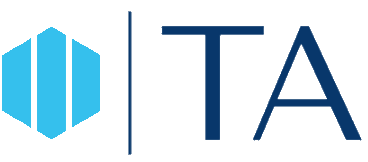Just a few months ago, apps like DALL-E 2, Midjourney and Stable Diffusion are changing the way filmmakers, interior designers and other creative professionals work.
For many years, Silicon Valley futurists believed that artificial intelligence and automation would wreak havoc on workers performing tasks involving repetitive manual labor. Truck drivers, cashiers and warehouse workers will lose their jobs to robots, and creative workers like arts, entertainment and media will be safe.
For many years, Silicon Valley futurists believed that artificial intelligence and automation would wreak havoc on workers performing tasks involving repetitive manual labor. Truck drivers, cashiers and warehouse workers will lose their jobs to robots, and creative workers like arts, entertainment and media will be safe.
Well, something unexpected happened recently. A.I. entered the creative class.
Over the past few months, AI-powered image generators like DALL-E 2, Midjourney and Stable Diffusion have enabled anyone to create unique and surreal images by simply typing a few words into a text field.
Over the past few months, AI-powered image generators like DALL-E 2, Midjourney and Stable Diffusion have enabled anyone to create unique and surreal images by simply typing a few words into a text field.
Although these applications are new, they are already incredibly popular. For example, DALL-E 2 has over 1.5 million users generating over 2 million images daily, and the official Discord server Midjourney has over 3 million members.
These programs use a type of AI called "Generative AI". It became popular a few years ago with the release of text generation tools such as GPT-3, but has since expanded to images, audio, and video.
These programs use a type of AI called "Generative AI". It became popular a few years ago with the release of text generation tools such as GPT-3, but has since expanded to images, audio, and video.
It's too early to say what this new wave of apps will ultimately cost artists and illustrators. However, it seems that these tools are already being used in the creative industry.
I recently spoke with 5 creative class experts about using AI-generated art in their work.
I recently spoke with 5 creative class experts about using AI-generated art in their work.
‘It spit back a perfect image.’
Collin Waldock, 29, a game designer from Brooklyn, recently started using generative AI. To create your own drawings for the online game Twofer Goofer, it is similar to the rhyming version of Wordle. Every day, players receive a prompt such as "a set of rhythmic moves in a semi-conscious state" and must come up with a pair of rhyming words that match the prompt. (In this case, "trance dance".)
Initially, Mr. Waldock planned to employ human artists through the Upwork platform to describe pairs of words that rhyme every day. However, he decided to use AI after seeing the cost, including $50 to $60 per image, plus feedback and editing time. Instead of. He pasted word pairs into Midjourney and DreamStudio, applications based on Stable Diffusion, and adjusted the results until they looked right. Total cost: a few minutes of work and a few cents. (DreamStudio charges about a cent per image. A standard Midjourney membership is $30 per month for unlimited images.)
"I typed in 'carrot parrot' and it came up with a perfect image of a parrot made of carrots," he said. “It was an immediate 'haha' moment.
Waldock said he doesn't feel guilty about using AI. Instead of hiring human artists because human artists are too expensive to make games worthwhile. If it weren't for
A.I., "we wouldn't have done it," he said.
A.I., "we wouldn't have done it," he said.
‘I don’t feel like it will take my job away.’
San Francisco-based interior designer Isabella Orsi, 24, recently used generative AI. An app called InteriorAI that creates layouts for clients. As a tech startup, the client wanted to decorate its office. Orsi uploaded a photo of the client's office to Interior AI and applied a cyberpunk filter. The app created new renderings in seconds showing what an office lobby would look like with colorful lights, outlined furniture and a new set of shelves.
Orsi believes that rather than completely replacing interior designers, generative AI will help generate ideas at the start of a project. “I think there are elements of good design that require a delicate human touch,” she said. “So I don't think it will kick me out of my job. Someone has to differentiate between different visualizations, and I think you need a designer in the end.”
‘It’s like working with a really willful concept artist.’
Filmmaker Patrick Claire, 40, from Sydney, Australia, started using AI-created art this year to prepare presentations at his film studio. Appearing on famous shows including Westworld, Mr Clair was looking for images of a specific type of marble statue. But when he saw Getty Images, a common source of concept art, he didn't understand it. Instead, he turned to the DALL-E 2.
“I put the marble statue on DALL-E, and it was closer than I could do in five minutes from the Getty,” said Claire.
Since then, he's been using the DALL-E 2 to create images like the one above of a Melbourne tram during a dust storm that you don't always see in online sources. Instead of replacing concept artists or taking Hollywood special effects masters out of work, he predicted that AI image generators would become part of every filmmaker's toolbox.
Since then, he's been using the DALL-E 2 to create images like the one above of a Melbourne tram during a dust storm that you don't always see in online sources. Instead of replacing concept artists or taking Hollywood special effects masters out of work, he predicted that AI image generators would become part of every filmmaker's toolbox.
"It's like working with a really quirky concept artist," he said.
"Just like a calculator can calculate numbers in ways your brain can't, Photoshop can do things your hands can't, but Photoshop will never surprise you," he said. "DALL-E will surprise you and come back with some really creative stuff."
"Just like a calculator can calculate numbers in ways your brain can't, Photoshop can do things your hands can't, but Photoshop will never surprise you," he said. "DALL-E will surprise you and come back with some really creative stuff."
‘What if we could show what the dogs playing poker looked like?’
During a recent creative brainstorming session, 49-year-old Jason Carmel, CEO of New York-based advertising agency Wunderman Thompson, wondered if AI could help. May I help you.
“We had three and a half good ideas,” he said of the team. "And the fourth lacked a way to visually explain it."
“We had three and a half good ideas,” he said of the team. "And the fourth lacked a way to visually explain it."
The image they wanted (a pack of dogs playing poker for an ad for a pet drug company) painted the artist all day long. Instead, they asked DALL-E 2 to create it.
"What if we could show the dogs playing poker?" said Mr. Carmel.
"What if we could show the dogs playing poker?" said Mr. Carmel.
Although the resulting images didn't appear in the ad, Carmel predicts that generative AI will be part of every advertising agency's creative process. However, he does not believe that the use of AI will significantly speed up the work of agencies or replace art departments. He has many images of A.I. It wasn't enough to show customers, and inexperienced users of these applications are likely to spend a lot of time formulating the right hints.
"When you see people writing about how this will destroy creativity, they talk like it's an efficiency game," Carmel said. "And I know they may not have played with themselves too much because they're lousy."
London-based service designer Sarah Drummond started using AI-generated images a few months ago instead of the black-and-white sketches she created for her work. This was a basic drawing of a visual representation of a process trying to develop an improvement, typically a group of shoppers lining up at a store checkout.
Instead of spending hours creating what Ms. Drummond calls "drop patterns," 36-year-old Miss Drummond now prints what she needs in DALL-E 2 or Midjourney. “Suddenly you can take 15 seconds or so and say, 'The woman at the checkout, the woman at the kiosk, a black and white illustration,' and you get something really professional in return,” she said.
Drummond said that A.I. The image generator had its limitations. For example, they are not good at creating more complex sketches or multiple images of the same character. And, like other creative professionals, she said she doesn't think AI designers will completely replace human illustrators. “Do I use it for final conclusions? No. I will hire someone to fully realize what we are trying to achieve,” she said. “But the one-time work that I do as a designer of any kind, whether it be vision, architecture or urban, is sketching, sketching, sketching. So it's a drawing tool."








0 Comments